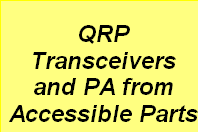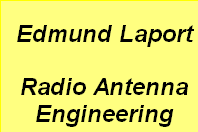

Antentop is FREE e-magazine devoted to Antennas and Amateur Radio an
Special page devoted to
Tube AM Radio Station for the 160- meters

Custom Search
|
ANTENTOP- 01- 2009, # 011 |
Tube AM Radio Station for the 160- meters |
|
Glow-discharge stabilitron
VT1 and VT2 may have voltage 80- 150-V.
Any low power double triode may be used at receiver (VT5). Any
low power RF- pentode may be used at VT6. |
Coil L4 may be moved along L5. It is need to get optimal
regime for the regenerative receiver. Figure 2 shows the design of the receiver's coil.
Relay K1- any suitable relay. R18 limited current through the
relay. |
|
Figure 2 Design Coil of the Receiver |
|
|
Tuning
of the Radio Station The tuning is simple and takes one evening if the radio
station is made from right parts that are installed in correct
way. At first do tuning of the receiver. Receiver should receive
something with antenna at least 3 meters long. Tune L3C12S3 for
the best receiving. With help C19 set the receiver to the middle
of the 160-meters band. Be sure, that C18 covers all 160-meters
band. R6 should provide a smooth regeneration control. If not,
change the distance along L4 and L5. If it is no regeneration,
switch visa versa terminal of L4 or decrease distance between
L4 and L5. Set the receiver in the middle of the 160s and tune
L6C20 and then L7C23 on to maximal sensitivity. |
The second, do set up of the
transmitter. Begin from the VFO. Using MW receiver set the VFO
to 900- kHz (300-meters). Load the transmitter to a 50-Ohm/10-Wtts
resistor or bulb having resistance in range 50- 300- Ohms. Adjust
doubler L2C5 on to maximum output power
of the PA. Audio amplifier/modulator works straight away at right
parts. Audio transformer T1 was used from an old tube receiver.
|
|
|
|
|
|
|
|
Page 76 |
|
 |
 |
 |
 |
Just for Fun:

Powered byIP2Location.com
Thanks for your time!
Last Updated:
February 2, 2020 21:30






